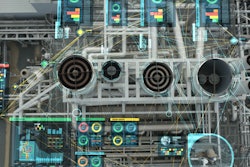
 Amarnath Shete
Amarnath SheteVolatile demand patterns, cutthroat competition and increasing consumer expectations for fast delivery tremendously challenge supply chains around the globe. While businesses and industries have steadily developed various levers to improve the performance of supply chains, those levers are not effective enough to meet customer demand, particularly in the digital age.
However, with the advent of the “Internet of Things” (IoT) there is tremendous potential to change the very structure of the supply chain, from a linear, step-by-step process, into a seamless, data insight-driven stream. IoT can create more cohesion and “IoTization” of conventional levers and can enrich the customer experience of employees, customers and other stakeholders in the supply chain.
Traditional Levers: Grinding Ahead
In recent years, companies have explored a gamut of levers in their quest to optimize supply chains. Most of these levers are structured around one of three categories, including people and process, IT enablement and industrial automation.
- People and process levers improve efficiency by process engineering, policy change and organization redesign. Simplification and all-inclusiveness of customers are at the crux of these initiatives and actions.
- IT enablement can help to improve supply chains by facilitating communication between various stakeholders and entities in the supply chain. Many of these levers work at a process transaction level and have evolved over a period of time from EDI to advanced ERP systems and supporting applications. They give customers access to tremendous amounts of information anywhere and anytime.
- Industrial automation helps to automate supply chain elements such as warehouses, shop floors and logistics. Automation, as we’ve known since the Industrial Revolution, greatly reduces manual efforts and human errors.
Pull all three levers and there’s no doubt that the customer experience has been improved. But while traditional levers tend to make a supply chain gain some speed and efficiency, there are still significant gaps and few opportunities to innovate. In short, there’s still no “wow!” experience.
This is due to the lack of flexibility because most conventional levers are investment-intensive and therefore costly and difficult to modify, while only offering transactional lever-only IT systems.
IoT: Filling The Gaps, Creating A Stream
Given accelerating pressures, further investment into traditional levers is risky. There’s an obvious need for a lever that requires incremental investment, is flexible for deployment and modification, operates at a granular sub-transactional level and prioritizes the customer rather than the process.
IoT-enabled levers can do exactly that. IoT would not eliminate conventional levers but fill in the gaps, creating a more seamless supply chain — even a supply stream. IoT enables more innovation, communication and an enormously improved customer experience, including more customer touch points, clearer insight into customer behavior and preventative capabilities. IoT is an ideal candidate for transforming supply chains in key areas: warehouse, inventory, logistics, shop floors and new product development.
IoTizing The Warehouse
IoT makes inventory visible at granular levels, enabling warehouse managers to better track, trace and move inventories. IoT also helps to facilitate better health monitoring of inventories, preventing loss and damage. Finally, supply chain managers can better coordinate and manage inventories because IoT enables tighter integration between warehouse inventories upstream and downstream.
IoTizing Inventory Management
A typical pain point in inventory management has been the glaring discrepancy between actual physical inventory and what’s shown in records. IoT can integrate data from logistics to provide an accurate and comprehensive view of replenishment and withdrawals. Warehouse managers can rest easy, even after inventory audits. Supply chain managers have a visual of their entire inventory at any given point in time.
IoTizing Logistics
While GPS-based tracking has been in use for a long time, the data from GPS systems is confined to limited systems and usage. IoT platforms can marry this with other transactional data, such as weather data, to provide logistics operators with a clear overview and the insights that support more tactical decisions.
IoTizing the logistics management process can also help avoid perishable losses by continuously monitoring the health of the inventory, and enabling precautionary steps. And finally, as stringent regulations are placed on the Hours of Services (HoS) for drivers, it’s imperative that truck operators get real-time data on drivers. IoT can combine HoS with real-time route data to help logistics supervisors plan and schedule trips more efficiently.
IoTizing Shop Floor Management
IoT can provide production managers with production status at workstations. This can help shop floor managers determine how close they are to achieving target production schedules.
IoT allows monitoring of parameters including sub-assemblies or work-in-progress jobs by other workstations in the assembly line and can help quality managers to measure process through sensors at a granular level and predict final product quality. This real-time data can provide the insights needed for effective root-cause analysis. Backed by IoT enablement, quality managers have keener data on each and every step of the manufacturing process and are able to identify root causes with greater accuracy and resolution.
IoTizing New Product Development
IoT can provide sensors and device capabilities as well as the platform to view product movement through the supply chain. Product development teams can leverage this data and analysis to improve supply chain efficiency.
With IoTization, if a company wants to launch a beverage in a particular geography, it can understand exactly how that product will perform before launch. Using IoT, the beverage company can understand and optimize every supply chain and customer touchpoint of the product’s journey, allowing it to bottle it, pack it, ship it and ensure that the customer experience is exactly what it intends. That’s how you make a “Wow!” experience.
From product development to delivery, IoT fills in the gaps left by conventional supply chain levers to create a seamless, predictable and enormously more efficient supply stream.
About the Author: Amarnath Shete leads Internet-of-Things Advisory at Wipro Digital. He is responsible for developing, selling and delivering IoT consulting and advisory services globally. Additionally, he owns the IoTized Supply Chain productized service offering. He has been with Wipro for over 7.5 years and has served in various roles in the business consulting, outsourcing advisory and digital transformation functions. His areas of expertise are business transformation, process reengineering, technology enablement and outsourcing advisory. He holds an MBA in operations management and a Bachelor of Engineering in electronics and telecommunications.






















